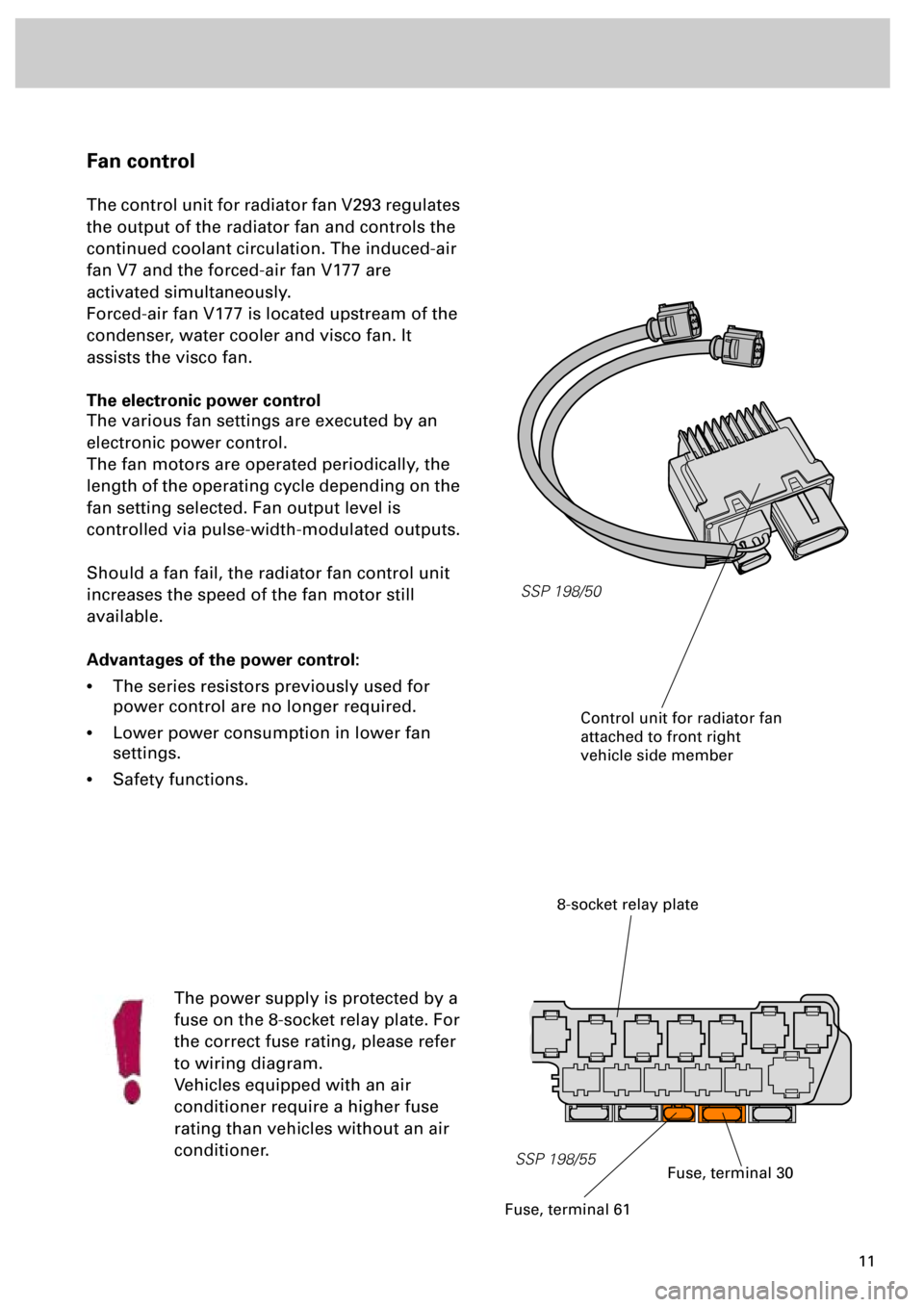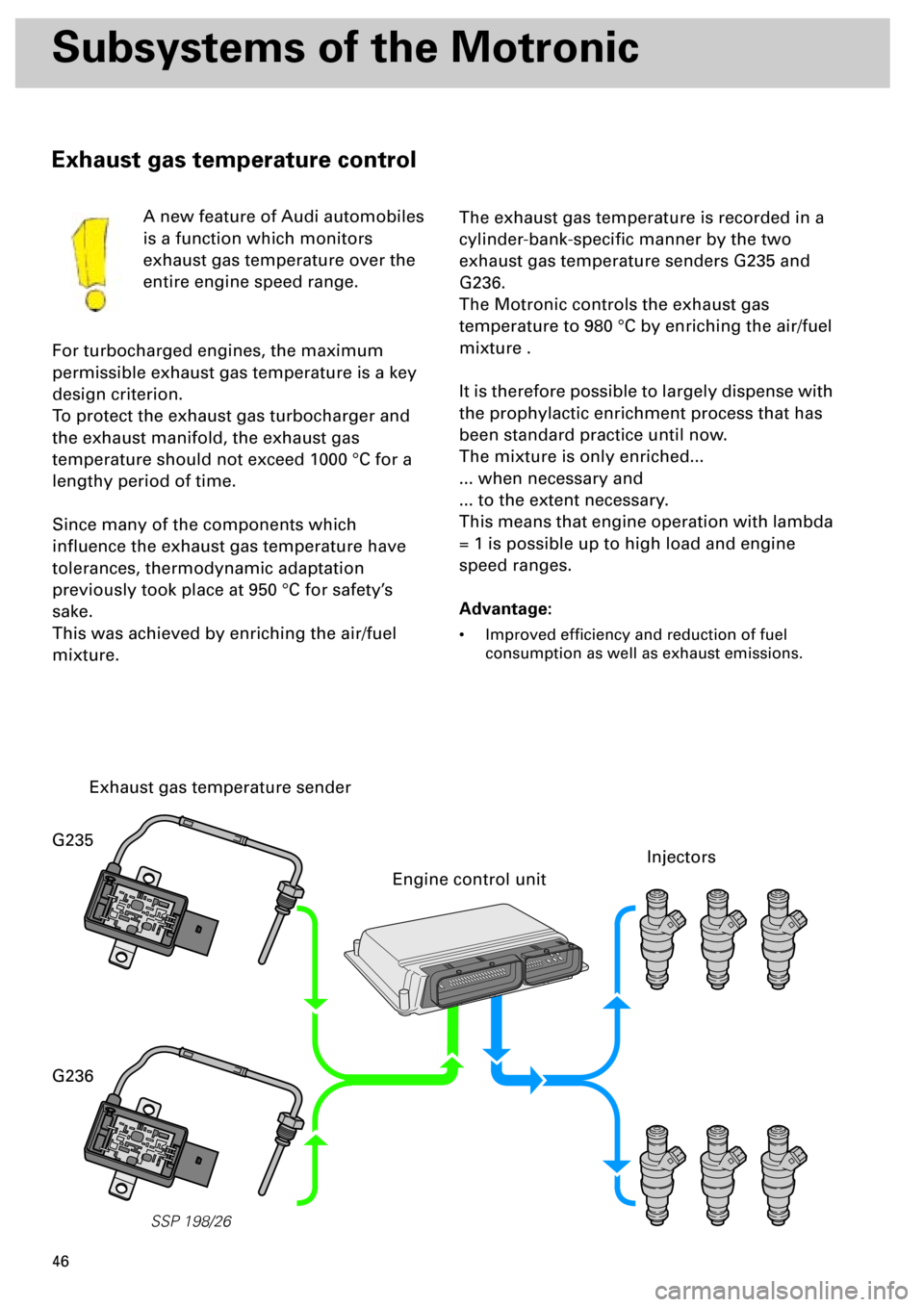length AUDI S4 1998 B5 / 1.G Engine Manual
[x] Cancel search | Manufacturer: AUDI, Model Year: 1998, Model line: S4, Model: AUDI S4 1998 B5 / 1.GPages: 72, PDF Size: 3.25 MB
Page 11 of 72

11
Fan control
The control unit for radiator fan V293 regulates
the output of the radiator fan and controls the
continued coolant circulation. The induced-air
fan V7 and the forced-air fan V177 are
activated simultaneously.
Forced-air fan V177 is located upstream of the
condenser, water cooler and visco fan. It
assists the visco fan.
The electronic power control
The various fan settings are executed by an
electronic power control.
The fan motors are operated periodically, the
length of the operating cycle depending on the
fan setting selected. Fan output level is
controlled via pulse-width-modulated outputs.
Should a fan fail, the radiator fan control unit
increases the speed of the fan motor still
available.
Advantages of the power control:
•
The series resistors previously used for
power control are no longer required.
•
Lower power consumption in lower fan
settings.
•
Safety functions.
The power supply is protected by a
fuse on the 8-socket relay plate. For
the correct fuse rating, please refer
to wiring diagram.
Vehicles equipped with an air
conditioner require a higher fuse
rating than vehicles without an air
conditioner.
SSP 198/50
8-socket relay plate
SSP 198/55
Control unit for radiator fan
attached to front right
vehicle side member
Fuse, terminal 30
Fuse, terminal 61
Page 45 of 72

46
SSP 198/26
Subsystems of the Motronic
Exhaust gas temperature control
A new feature of Audi automobiles
is a function which monitors
exhaust gas temperature over the
entire engine speed range.
For turbocharged engines, the maximum
permissible exhaust gas temperature is a key
design criterion.
To protect the exhaust gas turbocharger and
the exhaust manifold, the exhaust gas
temperature should not exceed 1000 °C for a
lengthy period of time.
Since many of the components which
influence the exhaust gas temperature have
tolerances, thermodynamic adaptation
previously took place at 950 °C for safety’s
sake.
This was achieved by enriching the air/fuel
mixture.
The exhaust gas temperature is recorded in a
cylinder-bank-specific manner by the two
exhaust gas temperature senders G235 and
G236.
The Motronic controls the exhaust gas
temperature to 980 °C by enriching the air/fuel
mixture .
It is therefore possible to largely dispense with
the prophylactic enrichment process that has
been standard practice until now.
The mixture is only enriched...
... when necessary and
... to the extent necessary.
This means that engine operation with lambda
= 1 is possible up to high load and engine
speed ranges.
Advantage:
• Improved efficiency and reduction of fuel
consumption as well as exhaust emissions.
Exhaust gas temperature sender
Engine control unit
Injectors
G235
G236